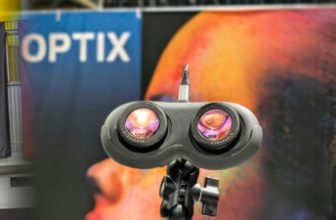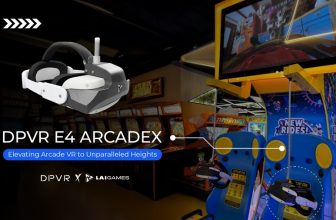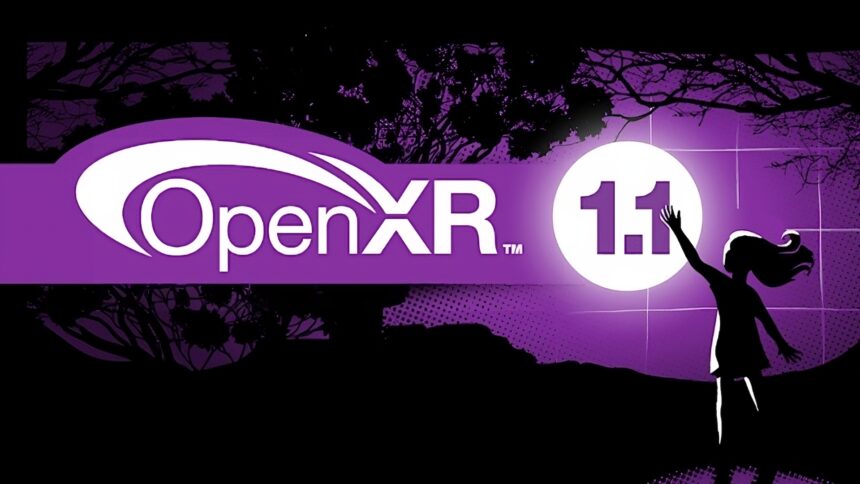
The VR and AR industry has been influenced by OpenXR. Recently, the specification has been revised and OpenXR 1.1 has been released by the Khronos Group.
The OpenXR Working Group has unveiled an updated edition of the industry standard. OpenXR 1.1 incorporates various API extensions into its fundamental specification. These extensions comprise improvements for floor positioning and more resourceful foveated rendering. Additionally, there are enhancements to the already existing features.
You can find additional details about OpenXR 1.1 in the press release.
What is OpenXR?
The aim of OpenXR is to establish a standard for fundamental operations in XR applications in order to simplify development for various devices and minimize fragmentation.
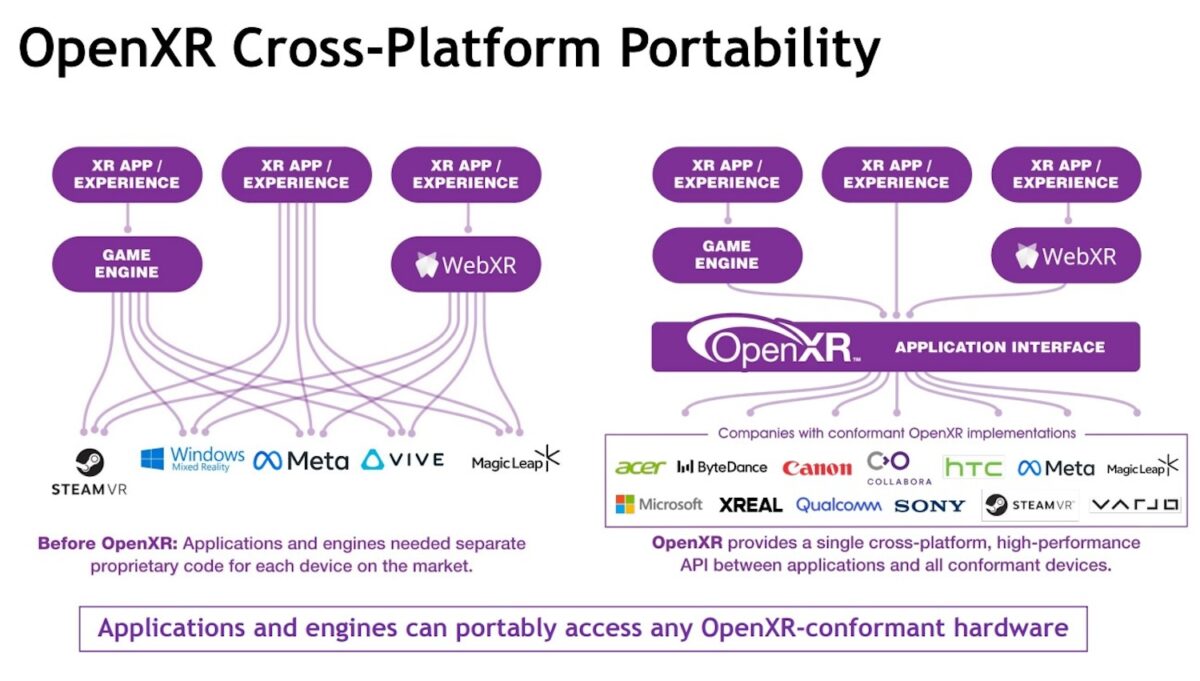
OpenXR provides a set of standardized API functions to simplify development for different VR and AR platforms. | Image: Khronos Group
OpenXR is supported by the majority of companies that directly or indirectly develop XR products, including ByteDance, Canon, HTC, Magic Leap, Meta, Microsoft, Sony, Xreal, Qualcomm, Valve and Varjo. Apple is a notable exception with Vision Pro. Unity and Unreal support OpenXR as well.
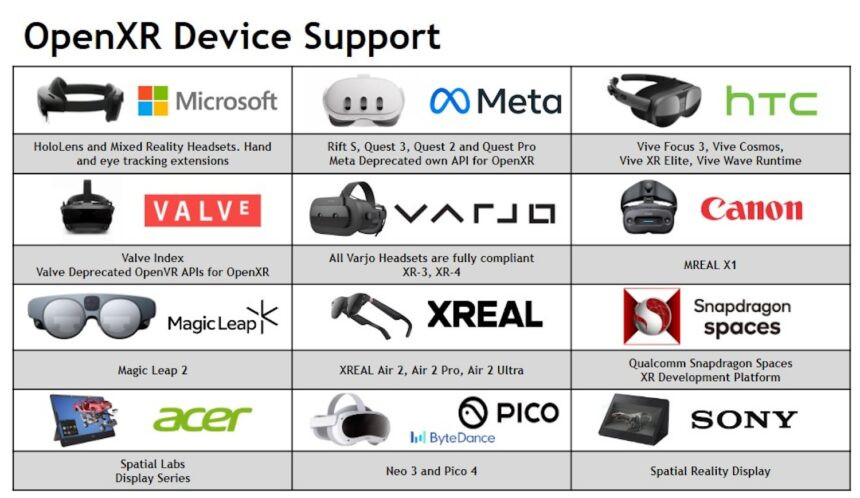
An overview of XR devices that support OpenXR. | Image: Khronos Group
The OpenXR specification was completed in July 2019 and has since been widely adopted by the XR industry, including full support from Meta Quest and SteamVR. Nonetheless, it took the working group almost five years to reach an agreement on the specification update.
The Working Group is currently investigating various areas of functionality, such as expanding hand tracking to encompass tracking of the entire body and improving the handling of spatial entities. This seems to be in response to Apple’s spatial operating system, visionOS.




